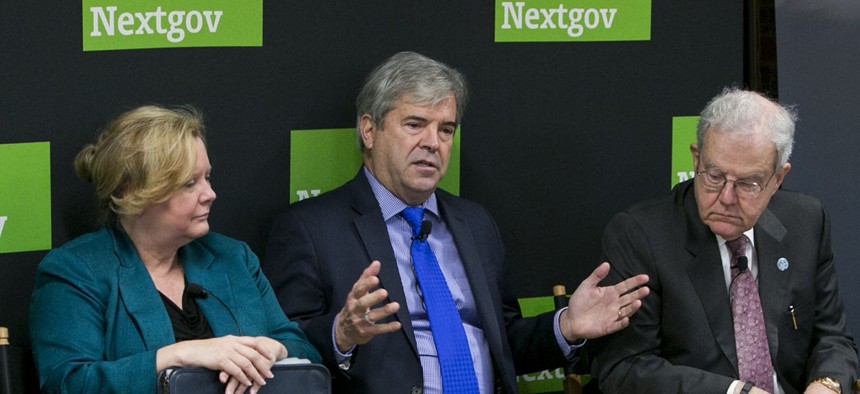How FITARA Changed the CIO Game

Kristoffer Tripplaar
Legislation gave CIOs new visibility into their own agencies.
Federal Information Technology Acquisition Reform Act continues to have a major impact on federal agencies and the chief information officers who own growing IT budgets across government.
In previous reports, Transportation Department CIO Richard McKinney has explained how he employed FITARA as a secret weapon, threatening to revoke network access to employees who failed to execute the federal government’s 30-day cybersecurity sprint.
Speaking at the Professional Services Council’s Tech Trends conference Wednesday, McKinney further explained FITARA’s importance, including how it helped reveal how poorly an agency that employs some 60,000 people understood its own networks.
» Get the best federal technology news and ideas delivered right to your inbox. Sign up here.
“We found several hundred endpoints we didn’t even know about,” McKinney said, referring to devices connected to functioning networks previously unknown or undocumented. “We didn’t even understand our own network. It was so sobering, but it was highly instructive to the conversation about how we move the future.”
Like an antidote to snake venom, FITARA allows CIOs to remedy the fallout from years of “a federated approach” to tech. The conversation has changed, McKinney said, and has gone from “what we ought to do to what we’re doing.”
Joe Klimavicz, CIO for the Justice Department, said FITARA has provided “unprecedented visibility” for CIOs into what their departments are actually doing. This has reinforced the importance IT modernization plays—especially at departments like Justice with significant legacy tech spend. Klimavicz said DOJ spends roughly $3 billion annually on old or outdated technology, which is the kind of spending U.S. CIO Tony Scott refers to as “keeping the lights on.”
Will the momentum continue through to the next administration? New legislation from Rep. Will Hurd, R-Texas, called the Modernizing Government Technology Act, has CIOs dreaming of working IT capital funds and a federalwide IT modernization fund from which to help fund modernization efforts. Yet, the next president will have much to say regarding the government’s tech agenda.
“My hope is the next administration picks up on all the momentum,” McKinney said. “Do not drop the ball, do not let all this stuff go back to the back burner. Keep it on the front burner. This may sound whiny, but these are tough jobs.”






